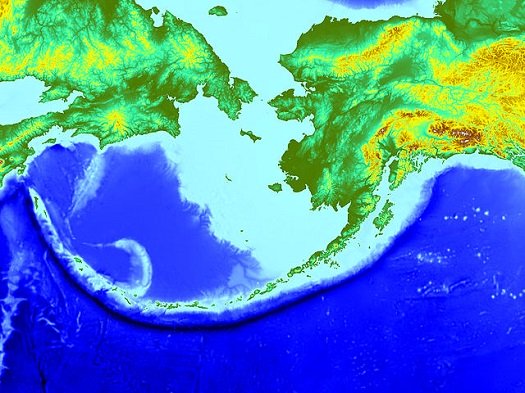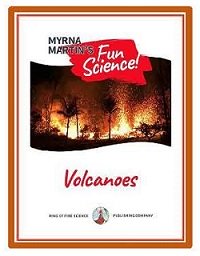Aleutian Trench in North Pacific Ocean
Border between North American Plate & pacific plate
The Aleutian Trench
The Aleutian Trench forms the border between the North American Plate to the north and the Pacific Plate on the south side of the Aleutian Islands. It formed as the heavier Pacific Plate converged with the North American Plate forcing the Pacific's oceanic plate into the mantle.

Black line below Aleutian Islands is the Aleutian Trench NOAA
Size of the trench
The trench between the Pacific Plate and the North American Plate is 3540 km (2,200 miles) long. It is between 80 km and 160 km (50 and 100 miles) wide. The trench reaches depths of 7620 m (25,000 ft) in some places.
Triple crustal plate junctions
Both ends of the trench stop at a triple junction where three crustal plates meet. The trench runs from the southeast coast of Alaska to the Kamchatka Peninsula in Russia.
Volcanic Islands along Aleutian Trench
Formation of volcanic islands
The Aleutian Islands have formed on the continental side of the fault zone. The Pacific Plate is moving beneath the North American plate at a 45 degree angle. The string of volcanic islands have formed on the north side of the trench on the North American Continent.


Click for More Information and to Order
Island arc of volcanoes
Volcanic arc of islands
A line of volcanoes have formed parallel to the trench. The volcanoes in the North Pacific have formed an island arc. These volcanoes make up the Aleutian Islands.
Formation of volcanoes
Some of the volcanoes parallel to the trench are on the Alaska Peninsula forming a volcanic arc of stratovolcanoes. Redoubt Volcano, Mt. Spurr and Katmai Volcano are three volcanoes that are part of this section of the Aleutian Arc.
KIDS FUN Science Bookstore
Check out Myrna Martin's award winning textbooks, e-books, videos and rock sets. The Kids Fun Science Bookstore covers a wide range of earth science topics. Click here to browse.










